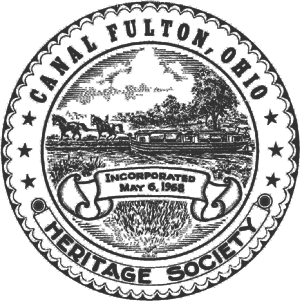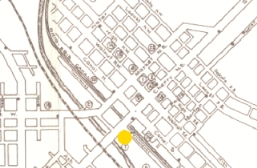Regular Public Tours
Addmissions: FREE (but donations are appreciated)
Season: May-October
Days: Sat & Sun
Hours: Noon-4:00 PM
Private Tours
General Addmissions: $1 per person (minimum charge of $10)
Member Addmissions: FREE
Season: all year
Days/Hours: request a tour time
Address: 103 Tuscarawas St., Canal Fulton, OH 44614
Origin: "Heritage House" and "Old Canal Days Museum"
The City Hotel
These two buildings are located on the site of the
former City Hotel.1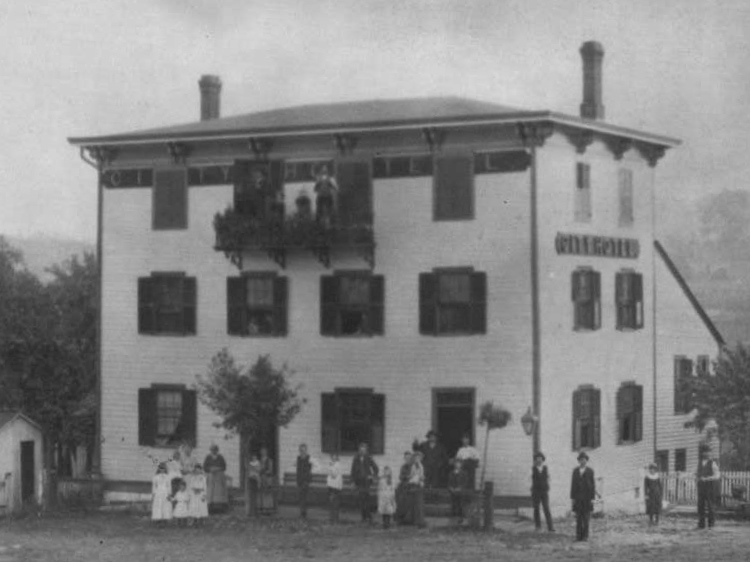 The Hotel was a prominent stop along the Ohio & Erie
Canal. Originally built in 1835 by Daniel Babst, this
site would host 3 of our nation's Presidents (William
Henry Harrison in 1840, John Quincy Adams in 1843 and
James Garfield in 1850).2
The Hotel was a prominent stop along the Ohio & Erie
Canal. Originally built in 1835 by Daniel Babst, this
site would host 3 of our nation's Presidents (William
Henry Harrison in 1840, John Quincy Adams in 1843 and
James Garfield in 1850).2
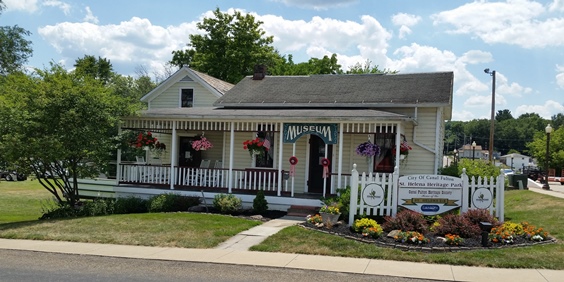
One commentator noted that for such a building to have hosted three Presidents a monument should have been erected in commemoration.3 Indeed, several townsfolk in the mid-1900's fancied that this historic site, situated at the entrance to the community park, would make for a fabulous museum.* Unfortunately, not all dreams become a reality and in the 1950's the building was razed.
However, the notion of a community museum residing on the property would not be forgotten, and not long afterward it would become a reality.
The Heritage House
![This is a sketch of the property of the Live and Let Live Saloon from a 1911 Sanborn Insurance map - highlighted is the building that would become our Heritage House; the building next to the railroad tracks with the 'D' [indicating 'dwelling'] is the current Dragonfly Tea Room](14.3photo_L&L_saloon.gif)
Within the late 1800's, Canal Fulton could boast of more than a dozen saloons; but, by 1912 there were only three. One of these establishments was located immediately west of the Tuscarawas River along Market Street (between what is now the Dragonfly Tea Room and the river). It was originally opened by Dan Sheldon who lived by the slogan he kept hanging on a sign in his front window - "Live and Let Live." The saloon would adopt and retain this name. However, within these early 1900's, local residents within the temperance movement were able to use a technicality to force the saloon to close (laws of the day only allowed for so many saloons per population).4 Ironically, its founding motto would not be able to save it and the Live and Let Live would be forced to shut its doors.
So... why have we gone into this random story about a forgotten saloon? Well, aside from it being a great tidbit of local history, the saloon was part of a complex of buildings on the property. One of these buildings would become our very own Heritage House. During the days of the saloon, our building would be used variously as a dance hall, warehouse and even dwelling. Years later, the property would come to be owned by Ralph Hardgrove and would be utilized in his coal business. While the saloon and other adjoining buildings had been torn down, Hardgrove wanted to contribute what he could to the preservation of his beloved town.
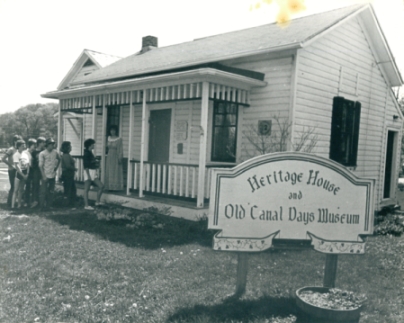
And so in 1968 (the very year of our conception) Hardgrove
deeded his little building to us.
Already, the Heritage
Society was feeling the generosity and civic pride of
the Canal Fulton community! Not long after this, the
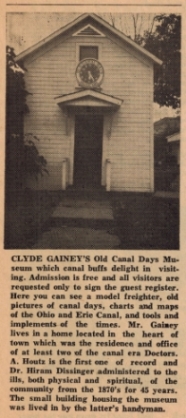 decision was made to relocate the house to the
entrance of the community park. By 1974, renovation
was complete and the structure became the Society's
headquarters where it would house our
collections, displays and office.
decision was made to relocate the house to the
entrance of the community park. By 1974, renovation
was complete and the structure became the Society's
headquarters where it would house our
collections, displays and office.
The Old Canal Days Museum
When the
Sesquicentennial
celebration of 1964 rolled
around, Clyde Gainey put on display his collection
of Canal Fulton artifacts. Enthused and encouraged
by the response he received during the event, Mr.
Gainey fixed up the old storage building in his
backyard and transformed it into a museum. Gainey
would continue adding to his collection over the
years, making his Old Canal Days Museum the "biggest
little museum in the U.S.A."5 Never charging
any admission and always glad to
welcome guests, from the time he opened in 1966 to
1979 (when he deeded it to the Heritage Society),
more than 50,000 visitors would be entertained and
enlightened by this local treasure trove.6
Never charging
any admission and always glad to
welcome guests, from the time he opened in 1966 to
1979 (when he deeded it to the Heritage Society),
more than 50,000 visitors would be entertained and
enlightened by this local treasure trove.6
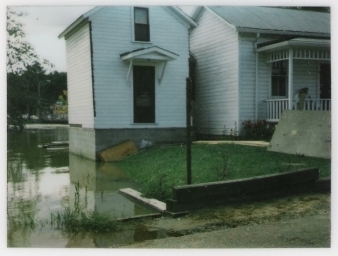
Clyde Gainey would continue to play an active part in
preserving and promoting Canal Fulton's history.7
However, a time came when even his energy and efforts
would run-out. So, in 1979 he donated the building
 and much of his collection to the Heritage Society.
The museum was then relocated and adjoined to the
Heritage House.
and much of his collection to the Heritage Society.
The museum was then relocated and adjoined to the
Heritage House.
The little building itself has played several roles throughout the town's history. Clyde and his family lived in the residence at 118 North Canal Street, which during the late canal era was the home of Dr. Hiram Dissinger. As any good country doctor of that era would do, Dissinger would frequently make house calls in and about the surrounding countryside.8 As such, he kept a horse and carriage and the little two-story building at the back of his lot was the summer house for his carriage driver/handyman.9 Through the years, the building was also used as a warehouse and a summer kitchen.
It is because of the efforts of Gainey and the many
others like him that our community continues to have
these wonderful connections to this history. Truly,
preserving and promoting our heritage is a task that
we all should take seriously. Because of Gainey's
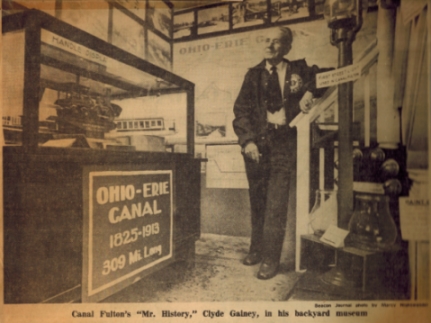 steadfast devotion, we can continue passing on our
past to future generations. Even today, there are
local residents who recall touring through Gainey's
museum as a child and looking in awe at the wonderful
lessons that our history has to offer.*
steadfast devotion, we can continue passing on our
past to future generations. Even today, there are
local residents who recall touring through Gainey's
museum as a child and looking in awe at the wonderful
lessons that our history has to offer.*
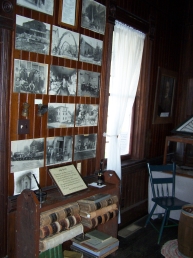
The Museum Today
These two buildings are now the Society's "Heritage House Museum" where town visitors and residents alike can stop in to absorb some local history. On display are some interesting and unique pieces of Canal Fulton memorabilia and a number of photos depicting a variety of aspects of early Canal Fulton life. There is also a nice assortment of maps, photos and displays regarding life along the Ohio & Erie Canal.
In keeping with Clyde Gainey's example, we do not charge admission during regular operating hours - we encourage visitors to just enjoy their journey into the past without regard to remuneration. Volunteers staff the museum throughout the season allowing school children on field trips, week-enders just passing through and everyone else the opportunity to appreciate the life and lifestyle of our fore-fathers.
However, we hope that in their appreciation visitors would DONATE GENEROUSLY so that our doors can remain open, affording more people and future generations the chance to continue learning about Canal Fulton's fascinating story.
Web Page Notes
1. The City Hotel was also known at various times as the Babst Tavern and the Walzer Exchange.
Porter, Old Canal Days, 455.
Porter, Old Canal Days, 446, 455.
Grace Goulder, forward to Old Canal Days, 6.
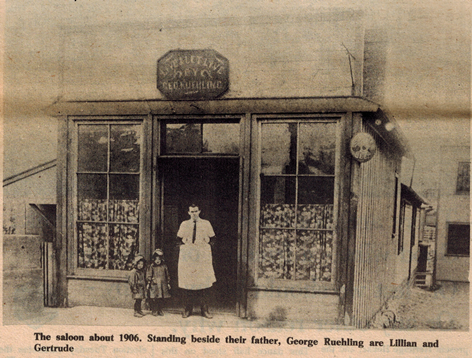
4. The 1975 Summer edition of The Canawler recounts the tale - how the 1910 Census should have closed 2 of the 3 remaining saloons in town. An excerpt from a Massillon paper at the time humorously relates how Canal Fulton officials went about trying to get enough names on the census rooster to keep at least two saloons open: "Now would you believe it, you must when I say that they robbed the coffin to carry the day." The local census enumerator accused City officials of including names of deceased people on the population roster in order to claim enough people lived in town (at least 1,000) in order to keep at least two saloons open.
Rose A. Leaver, "Is Fulton Mayor Trying to Break 'Boodle-Made Law'?" The Massillon Evening Independent, 8 November 1913, reprint, The Canawler, 1975, Vol.8, No.1.
George Reuhling had bought Sheldon's property and after being forced to close the saloon in 1912 Reuhling opened a restaurant. A year later, due to the destruction caused by the 1913 flood, Reuhling had to close the restaurant as well saying: "I was snowed out, voted out and flooded out of business."*
"History of Heritage Society Headquarters," The Canawler, 1975, Vol.8, No.1.
5. (or at least that is how it was regarded by locals)
Old Canal Days Museum brochure created by Clyde Gainey, 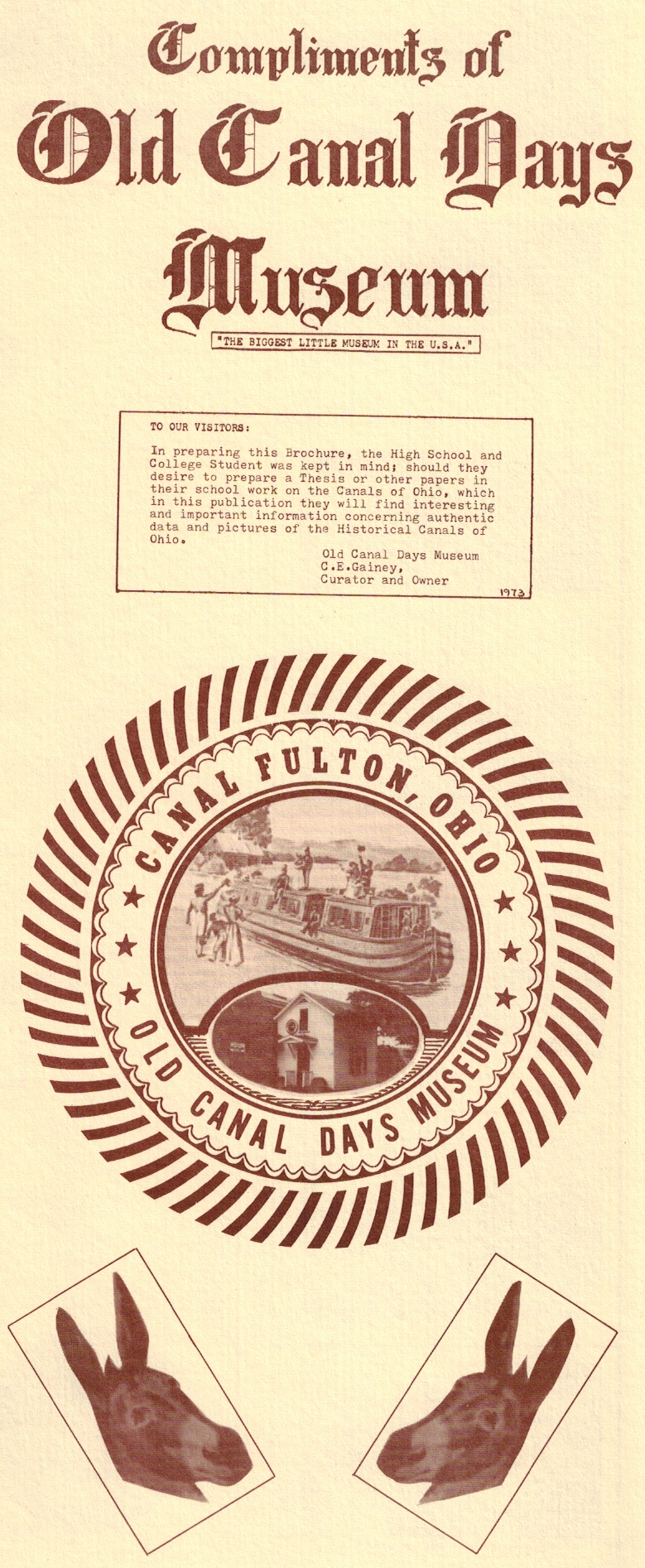 1973, CHFS collections.
1973, CHFS collections.
"Gainey Deeds Canal Days Museum to Heritage Society,"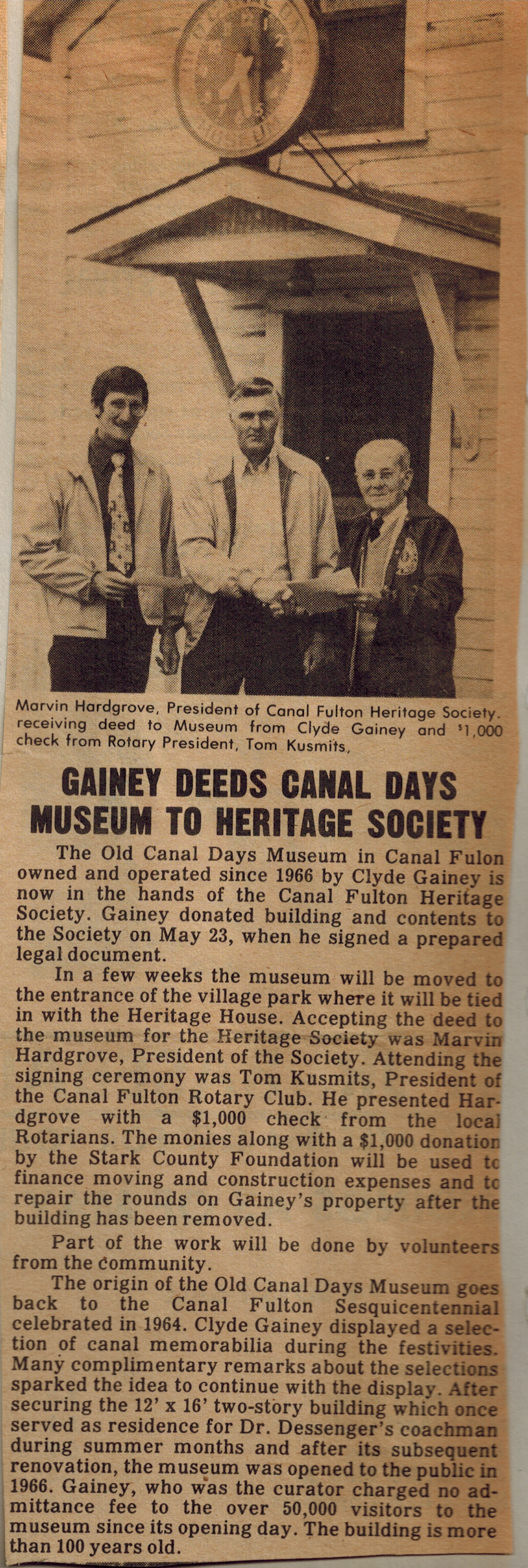 Canal Fulton Signal, 1979.
Canal Fulton Signal, 1979.
Purchase Agreement, Clyde and Mary Gainey to Canal Fulton Heritage Society, 23 May 1979, CFHS records.
7. Among the many things Gainey was involved in was the Rotary Club, on the Canal Board that managed the St. Helena II, designed and built Canal Fulton's swimming pool and was also one of the founding members of the Heritage Society.
Interview notes with Clyde Gainey, 19 January 1982, CFHS Collections.
8. For one such account checkout Russell Frey's book The History and Legends of Rogues' Hollow.
Russell Frey, The History and Legends of Rogues' Hollow 4th ed., (Siler City, NC: Pleasants Office Systems Inc., 1958), 70f.
9. A job his wife's brother held for a time.
Streby, Nostalgia, 51.
